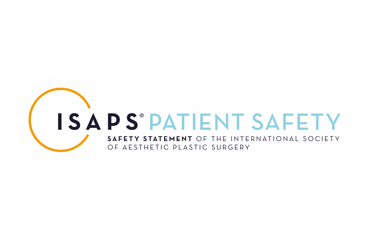In ISAPS’ continued mission to disseminate education to our members and to promote patient safety worldwide, we are sharing a recent advisory from the United States Food and Drug Administration (FDA).
The United States Food and Drug Administration (FDA) last week issued an alert to healthcare professionals and consumers that unsafe counterfeit versions of AbbVie's Botox® (OnabotulinumtoxinA) have been found in multiple states and administered for cosmetic purposes. Patients who have been injected with the counterfeit Botox® have developed signs and symptoms of systemic botulism.
Both licensed and unlicensed individuals have administered these counterfeit products in non-medical or unlicensed settings, posing significant risks to patients.
Currently, there is no indication that the reported events were linked to AbbVie’s FDA-approved Botox® Cosmetic and the genuine product should be considered safe and effective for its intended and approved uses.
To date, no counterfeits of other approved botulinum toxins have been reported.
Symptoms of Botulism
The symptoms of counterfeit Botox® are similar to those seen when botulinum toxin spreads to other parts of the body: blurred or double vision, difficulty swallowing, dry mouth, constipation, incontinence, shortness of breath, weakness, and difficulty lifting one’s head.
The FDA is aware of adverse events, including hospitalizations, linked to the counterfeit Botox®.
How to Identify Ccounterfeit Botox®
The FDA has released guidelines for clinicians and tips to identify the distinguishing features of counterfeit products.
The counterfeit products may be identified by one or more of the following:
- The outer carton and vial contain lot number C3709C3
- The outer carton displays the active ingredient as “Botulinum Toxin Type A” instead of “OnabotulinumtoxinA”
- The outer carton and vial indicate 150-unit doses, which are not made by AbbVie or Allergan (50- or 100-unit vials)
- The outer carton contains language that is not English
How to Report Counterfeit Botox®
- If you suspect that you have encountered counterfeit Botox® products, report them immediately to the FDA at 800-551-3989 or online.
- Healthcare professionals and consumers should also report any adverse events related to the use of Botox® or suspected counterfeit medications to FDA's MedWatch Safety Information and Adverse Event Reporting Program either online through the MedWatch Online Voluntary Reporting Form or via fax at 1-800-FDA-0178.
ISAPS Recommendations
ISAPS encourages patients and healthcare providers to always consider patient safety first.
As a reference point, there are many pharmaceutical companies worldwide that produce Clostridia-derived neurotoxins for both human and veterinary use.
BOTOX has become a household name for all of them, although there are diverse botulinum toxins approved worldwide.
Fake botulinum toxin remains a challenge as there is a definite shadow market for fillers and toxins worldwide.
Additionally, ISAPS Advises to:
- Verify Authenticity: Always verify the authenticity of Botox products before administration. Genuine Botox® manufactured by AbbVie is available in 50-, 100-, and 200-unit dose forms. Look for the product descriptions on the outer cartons, which should read “BOTOX® COSMETIC / onabotulinumtoxinA / for Injection” or “OnabotulinumtoxinA / BOTOX® / for injection.” The manufacturer's name should either be “Allergan Aesthetics / An AbbVie Company” or “Abbvie.” The active ingredient should be listed as “OnabotulinumtoxinA” on the outer carton and vial (FDA information). A package insert details the use of Botox® and safety information. The vial has specific holograms to show authenticity.
- Purchase Legally: Always purchase Botox® and other botulinum toxins from reputable and authorized suppliers. Label checking is recommended to be applied as a general safety principle in any botulinum toxin.
- Use Licensed Providers: Patients considering the use of neurotoxin or dermal filler should consult with a licensed provider who is experienced in injecting, knowledgeable about fillers, anatomy, managing complications, and knows the risks and benefits of the treatment.
- Provide Patient Education: Healthcare providers must educate patients about their use of genuine neurotoxins that have been legally purchased through approved vendors. Patients need education concerning risks associated with counterfeit Botox® and should be advised to seek treatment only from licensed professionals using authentic products.
Patients Safety Resources
Reference
1. Counterfeit version of Botox found in multiple states. News release. US Food and Drug Administration. April 16, 2024. Accessed April 16, 2024. www.fda.gov/drugs/drug-safety-and-availability/counterfeit-version-botox-found-multiple-states
